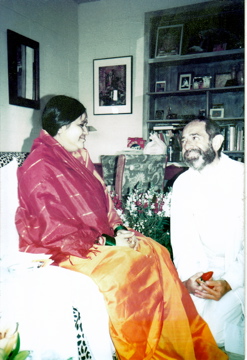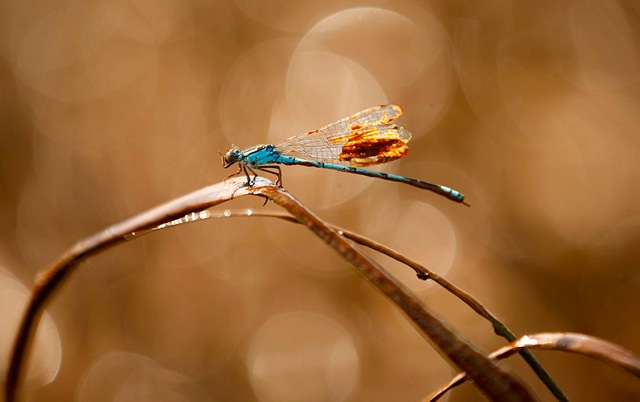Posts Tagged ‘Richard Schiffman’
From Mata Amritanandamayi to Amma Shri Karunamayi ~ Ron’s Memoirs
“… if someone is supposed to propagate the Dharma and their behavior is harmful, it is our responsibility to criticize this with a good motivation. This is constructive criticism, and you do not need to feel uncomfortable doing it. In “The Twenty Verses on the Bodhisattvas’ Vows,” it says that there is no fault in whatever action you engage in with pure motivation. Buddhist teachers who abuse sex, power, money, alcohol, or drugs, and who, when faced with legitimate complaints from their own students, do not correct their behavior, should be criticized openly and by name. This may embarrass them and cause them to regret and stop their abusive behavior. Exposing the negative allows space for the positive side to increase. When publicizing such misconduct, it should be made clear that such teachers have disregarded the Buddha’s advice. However, when making public the ethical misconduct of a Buddhist teacher, it is only fair to mention their good qualities as well.”
~ Dalai Lama, Ethics in the Teacher-Student Relationship, 1993
“Can a guru who displays jealousy and competition toward other spiritual leaders help seekers? Such behavior shows that the personality aspects, each with its own ego, are still in control.”
~ Swami Sivananda Radha, “In The Company of The Wise”, page 190
“Do not believe in anything simply because you have heard it.
Do not believe in anything simply because it is spoken and rumored by many.
Do not believe in anything simply because it is found written in your religious books.
Do not believe in anything merely on the authority of your teachers and elders.
Do not believe in traditions because they have been handed down for many generations.
But after observation and analysis, when you find that anything agrees with reason and is conducive to the good and benefit of one and all,
then accept it and live up to it.”
~ Buddha

Shri Amma Karunamayi
Introduction.
After Guruji returned to India in 1980, I met and learned from many other teachers. Beginning in 1987, I was especially attracted to the devotional path of Amritanandamayi (Ammachi) of calling and crying to the Divine, and for seven years I attended many of her US darshans and regular programs at her San Ramon ashram. (See https://sillysutras.com/other-teachers-mata-amritanandamayi-ammachi-rons-memoirs/)
But while drawn to Ammachi’s devotional path, I continued meeting other spiritual teachers. Through my interest in Ammachi, I met Shri Vijayeshwari Devi another memorable Indian female teacher known as Amma Shri Karunamayi who like Ammachi is revered by some devotees as an avatar or embodiment of divine mother. I met Karunamayi under surprising circumstances which ended my relationship with Ammachi and sparked an important new transformative life phase of increasing reliance on inner rather than outer authority. (see e.g. my essay “I’ve Found A Faith-Based Life”)
Learning of Amma Shri Karunamayi.
In 1995, my trusted friend Richard Schiffman – a talented spiritual poet, author and mainstream journalist – who I had met at an Ammachi program in New Mexico after he had lived many years in India – told me by phone that Amma Shri Karunamayi a female Indian spiritual teacher considered a Divine Mother avatar had recently visited New York and other US areas for the first time. He said that many Ammachi New York devotees had been greatly impressed by Karunamayi, and that some wanted to help her organize future US tours. From Richard’s description of Karunamayi, I felt a strong desire to see her, so I asked Richard to keep me informed of her schedule.
Synchronistically, just after Richard told me about Karunamayi, I received two letters from friends in India, telling how they had just spent a month with Karunamayi in Bangalore. They said she is “quite special [and] incredibly gentle and soft and radiates a beautiful and loving presence”, and that “many miraculous stories [are] attributed to her”. They recounted some of those stories, and reported that because Karunamayi was college educated with a focus on meditation (and not hugging) she attracted some more sophisticated devotees than the devotionally adoring people often attracted to Ammachi.
In March 1996, I again received a synchronistic phone call concerning Karunamayi, this time from another spiritual friend, who – like Richard and my friends in India – was also an Ammachi follower. Until then I was unaware that she knew of Karunamayi. So I was quite surprised when my friend asked if I could suggest some Bay Area place where Karunamayi and her entourage could stay in a few months during their first Bay Area visit. Only then did my friend disclose that she had met Karunamayi in Seattle in 1995 where she had offered to host Karunamayi’s first Bay Area visit in 1996.
Also, my friend credibly explained that Ammachi’s New York devotees had received an ‘edict’ from Ammachi – which I later confirmed – against helping or seeing Karunamayi; that she had changed her mind about hosting Karunamayi based on “personal considerations”, and because she felt disharmony with Karunamayi’s national organizers who were aggressively putting undue time pressure on her.
With compassion for my friend’s dilemma, and motivated by a sense of injustice about Ammachi’s ‘edict’ against Karunamayi, I offered to make inquiries about possible San Francisco places where Karunamayi’s entourage could reside and give public programs. But, I explained that since I was living a reclusive life in a small apartment I could not offer to personally host Karunamayi’s large entourage.
Thereupon, my friend called the national organizers for Karunamayi, “resigned” as Bay Area sponsor, and gave them my phone number as a San Francisco contact who might look for appropriate venues. Without consulting me, the Karunamayi national organizers then “conscripted” my services by distributing national flyers with my phone number as their San Francisco organizer.
Despite my displeasure with that involuntary “conscription” as a Karunamayi organizer, I did not – like my friend – tell the national organizers to ‘take me out of the loop’. My sense of compassion and justice inhibited me from leaving Karunamayi without help in the Bay Area. So I decided to help Karunamayi while seeking others who would replace me as Bay Area organizer. Thereupon my daily regime of solitary meditation and prayer and walking in Nature was significantly changed as I made and received phone calls, wrote letters and inspected possible darshan halls.
Though I never located a replacement Karunamayi sponsor, I found several friends who agreed to help. A recently widowed friend who lived alone in a very large Presidio Heights residence agreed to house Karunamayi’s entourage, and to allow morning public gatherings there. Another friend agreed to answer all telephone inquiries about Karunamayi’s schedule. And my dear friend Bina Chaudhuri – widow of Dr. Haridas Chaudhuri, with whom she had co-founded the California Institute of Integral Studies (CIIS) and the Cultural Integration Fellowship (CIF) – arranged for Karunamayi’s evening programs to be held in the lovely CIF main hall.
Meeting Karunamayi.

Ron with Karunamayi
As Karunamayi’s first San Francisco sponsor, I was privileged to have various private discussions with her. I learned that like Ammachi Shri Vijayeshwari Devi had no lineage or guru, but that her mother had been a devotee of Shri Ramana Maharshi, who was told by Ramana when pregnant that she would give birth to Devi [“the Mother”]. Just short of college graduation, Karunamayi had retreated to a remote forest where she spent ten years in solitary rigorous practice. Like Guruji, and consistent with her extraordinary early sadhana, Karunamayi’s emphasis was on meditation. Her presence evoked for me moods more meditative than devotional, and inspired my poetry about silence. (see e.g. https://sillysutras.com/in-silence-sweet/) Like Guruji she apparently perceived my subtle auric field. Most memorably she once told me that: “Dhyanyogi has greatly helped you in ways you can not yet know.”
She did not insist that devotees have only one guru.
Once as I was driving Karunamayi and Swami Vijashwarananda – her cousin and Telugu/English interpreter – to the beautiful Marin County Vedanta retreat center, the Swami asked: “Mother wants to know what you eat?” In response I told him: “I eat mainly raw fruits and vegetables, nuts and seeds, and rice and beans.” Whereupon the Swami interpreted my words for Karunamayi, who laughed and replied in Telugu. Then Swami said to me: ”Mother says you’ve eaten like that for many lifetimes.”
Unlike Ammachi, Karunamayi repeatedly encouraged devotees to seek company of other spiritual teachers, as well as to meditate regularly.
The “last straw” with Ammachi.

All my helper friends – like me – were Ammachi followers, but none of us felt conflict with Ammachi since Karunamayi’s San Francisco visit was scheduled for August when Ammachi would not be here. Though my sense of fairness was severely shaken by Ammachi’s New York ‘edict’ against Karunamayi, for a while I suppressed those feelings, along with my long suppressed concerns about a commercialized cult of personality around Ammachi, and the Mother Meera book burning incident. So at first that edict did not quite become “the last straw” in ending my faith in Ammachi.
That happened only after I learned of defamatory gossip and rumors about Karunamayi attributable to the Ammachi organization. Especially after I had met and was blessed by Karunamayi, and was experientially convinced of her authenticity as a spiritual master, I became deeply offended by these false and scandalous rumors, and motivated to help her as an ‘anti-defamation’ attorney.
For many years one of my daily Hindu practices from Guruji was recitation of the Hanuman Chalisa – a poetic ode to the legendary monkey-god Hanuman by poet-saint and philosopher Tulsidas. Though when I met Karunamayi my daily Chalisa practice had lapsed, Karunamayi saw the Hanuman Chalisa in my subtle field and, during a ceremony atop sacred Mount Tamalpais in Marin County, she spontaneously asked me to recite it as part of the ceremony.
Serendipitously, I had just received by mail from my friends in India a beautiful printed version of the Hanuman Chalisa. In a letter to them acknowledging that gift, I wrote:
“Slanderous rumors about Karunamayi originating at the ‘Kerala cuckoo compound’ have strongly activated my justice vasanas [propensities].” — so I wish to — “help as Her self-appointed anti-defamation lawyer. The Chalisa venerates Hanumanji as ‘the protector of saints and sages’, and after many years of recitations, I’ve assimilated some of that energy.”
So, despite my gratitude for the many devotional blessings I had received in Ammachi’s presence, after several years of growing but suppressed concerns about an ‘adulation of the incarnate’ rather than ‘adoration of the Infinite’ atmosphere around her, and about my diminished energy at her satsangs, my realization of Ammachi’s apparent jealousy and competition toward Karunamayi, Mother Meera and other teachers proved “the last straw” in my relationship with her.
Moreover, this realization traumatically brought to my consciousness the long-suppressed awareness that naively and mistakenly I had been projecting perfection onto Ammachi, rather than seeing her as a limited human being; that in adulating Ammachi I was misperceiving my own best qualities. This sudden ‘perfection projection realization’ triggered an important new transformative life phase of increasing reliance on inner rather than outer authority, which I will recount in other memoirs chapters.
(*see footnote)
Epilogue.
For many years I have been reluctant to publicly share my disaffection with Ammachi and her organization. I did not wish to discourage other devotees with different perspectives, some of whom are friends. But I now feel morally impelled to share my observations which support credibility of a recently published critical book about Ammachi, by Gail Tredwell (aka “Gayatri” or “Swamini Amritaprana”), who for twenty years was Ammachi’s revered personal attendant, and first and closest Western female devotee. Her memoir entitled “Holy Hell, A Memoir of Faith, Devotion and Pure Madness” contains many shocking but credible revelations, including reference to Ammachi’s ‘edict’ against Karunamayi (at pages 264-266).
Unable truthfully to attack the credibility of Gail’s memoir about Ammachi, the MA Centers organization has attacked Gail’s character by asserting that she is “a troubled individual” whose writings are “completely untrue and without a basis in fact or reality”, and by instigating and publishing false and defamatory rumors and on-line blog posts about her, while asserting meritless libel claims to intimidate others against commenting on or republishing Gail’s sincere perspectives.
Since I am quite convinced that Gail’s memoirs are true and sincere, I find deeply disrespectful and offensive such an ad hominem attack on her by those to whom she selflessly dedicated much of her adult life. Just as I felt impelled to assist Karunamayi against defamatory rumors, I now feel dharmically impelled to support Gail’s credibility.
Footnote.
* In further memoirs I will tell how – like some other Westerners without any guru tradition – I was naive about Ammachi and other limited or flawed Eastern teachers onto whom I mistakenly projected purported perfection and infallibility, rather than seeing them as limited humans though perhaps further evolved in spiritual awareness. And, I will recount how while faithfully revering my beloved Guruji, and while remaining grateful for blessings received from all my spiritual teachers – including Ammachi – I more and more began relying on inner rather than outer authority; and how whimsically I told friends that I had been transformed from “Born-again Hindu” to “Uncertain Undo”; from Gurubhai to ‘Guru bye bye’.
To karmically repay those few teachers I’ve forsaken in this life, in my next incarnation I may become an insurance underwriter/salesman specializing in custom coverage for spiritual teachers called: “Perfection projection protection”.
Kiss of Death

Kiss of Death
A poem by Richard Schiffman, after dragon fly image
by photojournalist Gerald Herbert
That little tragedian, the dragon fly,
wings smeared with earth’s black blood,
stands glued to its stem like an orator.
It will never leave this soapbox now.
Just hangs there spread-eagled, a wee-Jesus
on a crucifix of grass. Some undertaker
draped its rainbow in a shroud of pitch,
shined its tar-ball shoes, closed those onyx
eyes for good. Now it stands an effigy
of itself. It wants to tell us that it died
for our sins. But its lips are sealed.
This orator is without a speech.
One of the meek, so busy inheriting
the earth, it never noticed the evil tide
bubbling up from earth’s slit jugular,
it never saw that glistening drop of oil
on Judas’s lip.